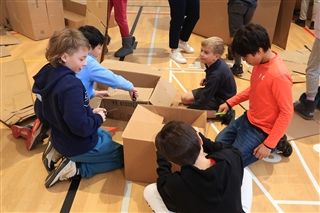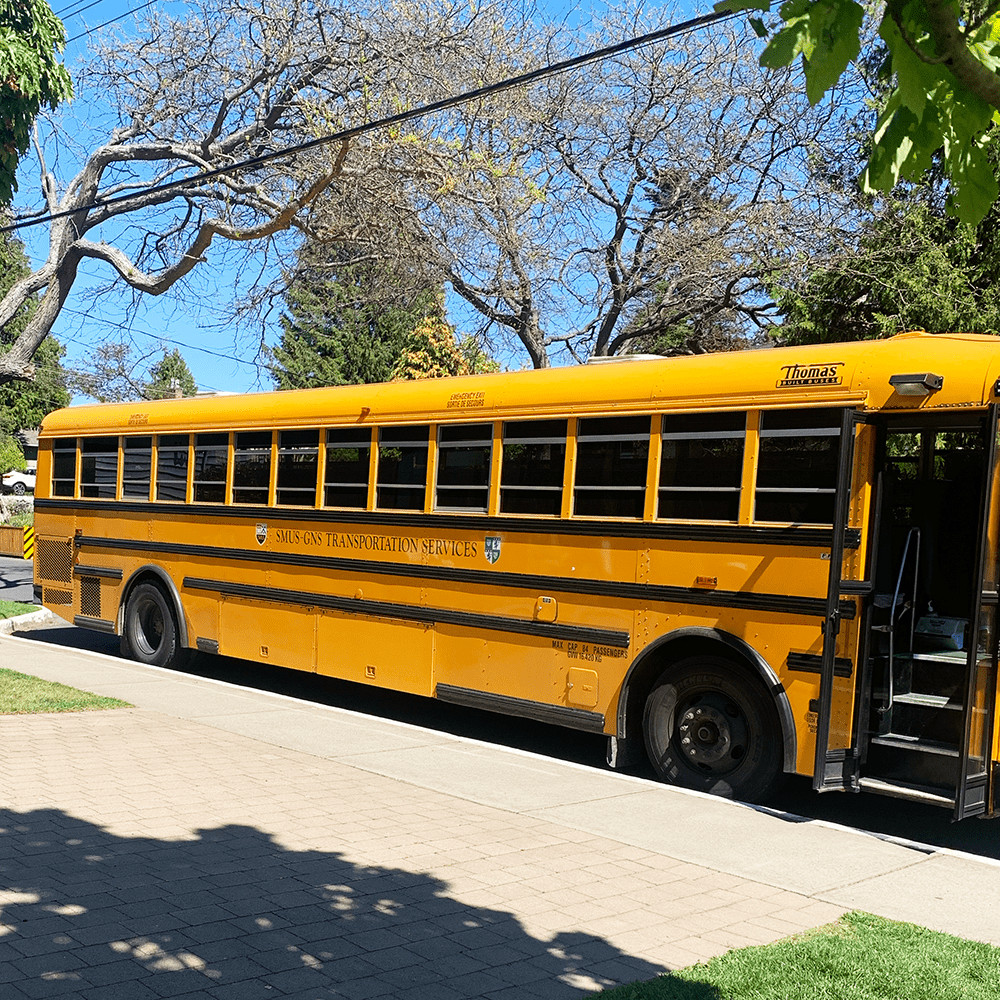Students had very few parameters, so the sky was the limit with regard to how they used their creativity and ingenuity. Their task was based on the question “How can you create for your community?”
We gave the students cardboard, string, crayons and some clothespins, and told them that whatever they created had to be able to be disassembled eventually and that all the parts and pieces needed to be reused in their original form, or recycled and composted. This activity was a Big/Little Buddy activity, so it allowed students in different grades to work together.
This activity was designed following an International Baccalaureate (IB) Primary Years Programme (PYP) workshop attended by myself, Junior Kindergarten teacher Ms. Meera Bandeccha and First Steps teacher Ms. Debbie Esposito. The workshop focussed on developing your school’s Primary Years Programme into the preschool years.
Play was explored as an overarching aspect of the workshop, such as the important parts of play and free play, and how much of either is actually happening. It may not appear like much is happening, but all of the IB approaches to learning skills are used in play. These skills are important components of the IB Continuum that are developed beginning with our three-year-olds and continuing until graduation.
The Approaches to Learning Skills that learners develop and demonstrate during free play include:
-
Thinking (critical thinking, creative thinking, information transferring, and reflection and metacognition)Self-management (organization and states of mind)Communication (Exchanging information)Social (Interpersonal relationships, social and emotional intelligence)ResearchThroughout the Cardboard Challenge, teachers kept their eyes open to observe what types of skills the students were demonstrating. The questions the teachers ask and the manner in which they ask can have an enormous impact on the quality of the student’s thinking. The PYP promotes a collaborative way of learning, with the idea that we come together, share ideas and talk through things to build that collective knowledgeOur roles throughout an inquiry-based activity are to guide whoever is listening to what students are saying, and when the students come to us with questions, we try to direct those back to them. We try to keep things open so they can move forward.We wanted to examine how often we assign students activities with very few parameters and then observe what skills they are learning because this informs the teachers about what we need to focus our attention on.Students came up with very creative ideas for the theme of “How can you create for your community?” They made structures like a hot tub, a cat, an astronomy centre, a general store, and a car.We really let them just have that unstructured time to see what they would do with it. It was amazing to see how they took the materials and manipulated them in ways we had not imagined.





